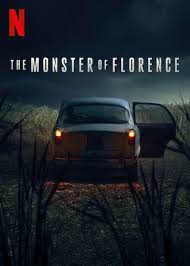Exploring The Monster of Florence on Netflix

Introduction
The Netflix series ‘The Monster of Florence’ has recently garnered significant attention for its compelling retelling of a chilling true crime saga that has haunted Italy for decades. The narrative, steeped in a blend of mystery and horror, revolves around a series of gruesome murders committed in the rural outskirts of Florence. These events not only horrified the local populace but also became the subject of extensive investigations and media frenzy. The importance of this topic lies in its exploration of human psychology, the social implications of crime, and the intricacies of police work amidst public scrutiny.
The True Story Behind the Series
The real-life story follows a series of murders that occurred between the late 1960s and early 1980s, where couples were brutally slain in remote areas around Florence. The use of ritualistic and symbolic violence, particularly the sexual mutilation of victims, deeply shocked the Italian community and led to widespread fear. Investigators from multiple jurisdictions struggled to catch the elusive killer, who became known as ‘Il Mostro di Firenze’ (The Monster of Florence). The case remains unsolved, adding an unsettling dimension to the narrative.
Netflix Adaptation
Netflix’s adaptation aims to provide both a gripping thriller and a documentary-style examination of the case’s impact on society and criminal psychology. The show’s narrative intertwines interviews with journalists, investigators, and criminologists, providing viewers insight into the complexities of the murders and the myriad theories surrounding the identity of the killer. This series not only delves into the crime itself but also addresses the media’s role in the aftermath and the resultant public hysteria.
Public Reception and Impact
The show has already sparked conversations about the ethics of true crime portrayals and their potential to sensationalise real-life events. Critics have noted the delicate balance required in dramatizing such sensitive subjects while remaining respectful to the victims and their families. As viewers engage with the series, discussions about the ethics of true crime narratives and their influence on public perception of crime will become increasingly vital.
Conclusion
In summary, ‘The Monster of Florence’ on Netflix not only captivates audiences with its suspenseful storytelling but also serves as a catalyst for deeper examination of historical crimes and their modern interpretations. As more viewers tune in, it is anticipated that the series will reignite interest in the real-life mystery and inspire further exploration into the repercussions of unsolved crimes on society. This show is poised to leave a lasting impression on the true crime genre, inviting viewers to consider the line between entertainment and reality.









